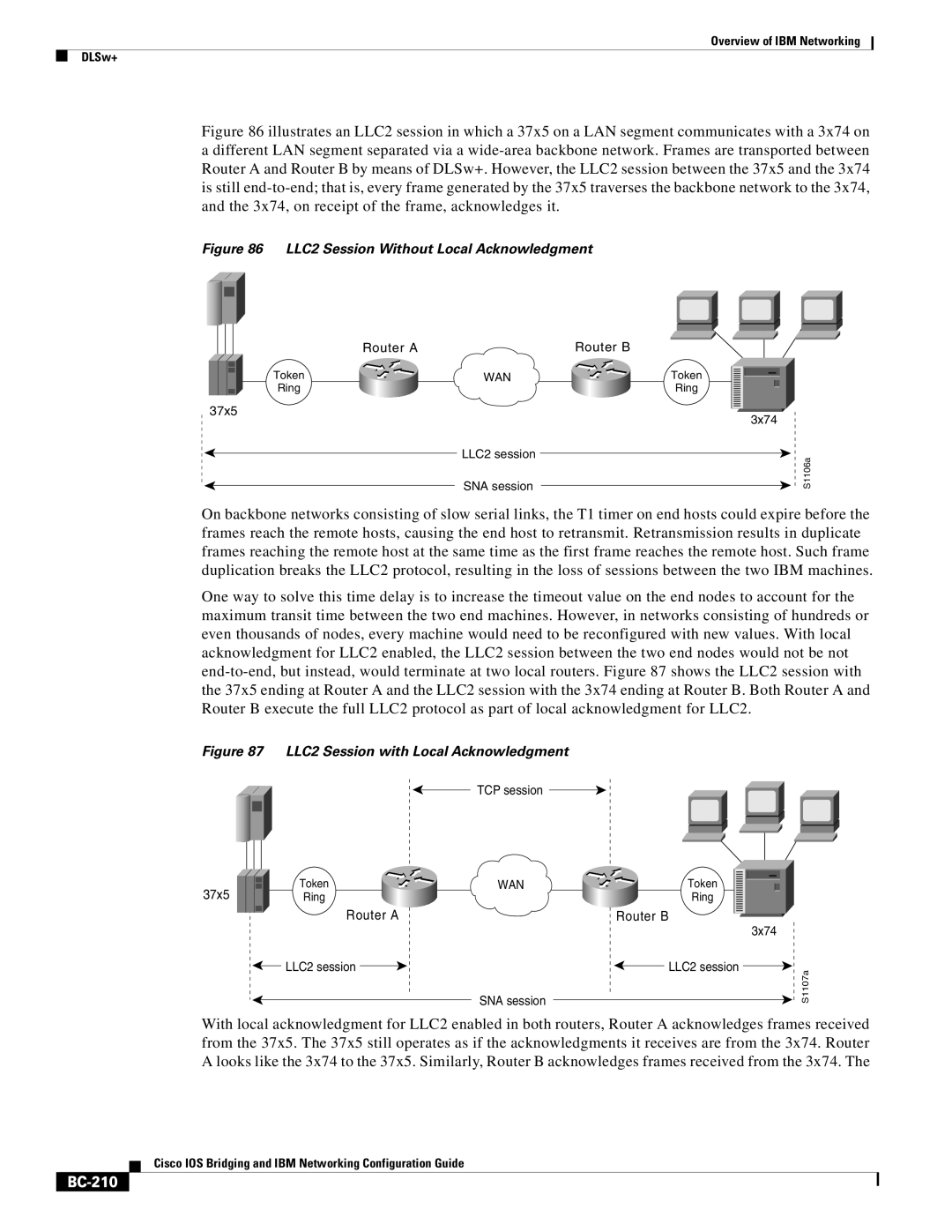
Overview of IBM Networking
DLSw+
Figure 86 illustrates an LLC2 session in which a 37x5 on a LAN segment communicates with a 3x74 on a different LAN segment separated via a wide-area backbone network. Frames are transported between Router A and Router B by means of DLSw+. However, the LLC2 session between the 37x5 and the 3x74 is still end-to-end; that is, every frame generated by the 37x5 traverses the backbone network to the 3x74, and the 3x74, on receipt of the frame, acknowledges it.
Figure 86 LLC2 Session Without Local Acknowledgment
Router A | Router B |
Token | WAN | Token |
Ring |
| Ring |
37x5 |
| 3x74 |
|
|
LLC2 session
SNA session
S1106a
On backbone networks consisting of slow serial links, the T1 timer on end hosts could expire before the frames reach the remote hosts, causing the end host to retransmit. Retransmission results in duplicate frames reaching the remote host at the same time as the first frame reaches the remote host. Such frame duplication breaks the LLC2 protocol, resulting in the loss of sessions between the two IBM machines.
One way to solve this time delay is to increase the timeout value on the end nodes to account for the maximum transit time between the two end machines. However, in networks consisting of hundreds or even thousands of nodes, every machine would need to be reconfigured with new values. With local acknowledgment for LLC2 enabled, the LLC2 session between the two end nodes would not be not
Figure 87 LLC2 Session with Local Acknowledgment
TCP session
Token | WAN |
37x5Ring
Router A
![]() LLC2 session
LLC2 session ![]()
SNA session
Token
Ring
Router B
3x74
![]() LLC2 session
LLC2 session ![]() S1107a
S1107a
With local acknowledgment for LLC2 enabled in both routers, Router A acknowledges frames received from the 37x5. The 37x5 still operates as if the acknowledgments it receives are from the 3x74. Router A looks like the 3x74 to the 37x5. Similarly, Router B acknowledges frames received from the 3x74. The
Cisco IOS Bridging and IBM Networking Configuration Guide
